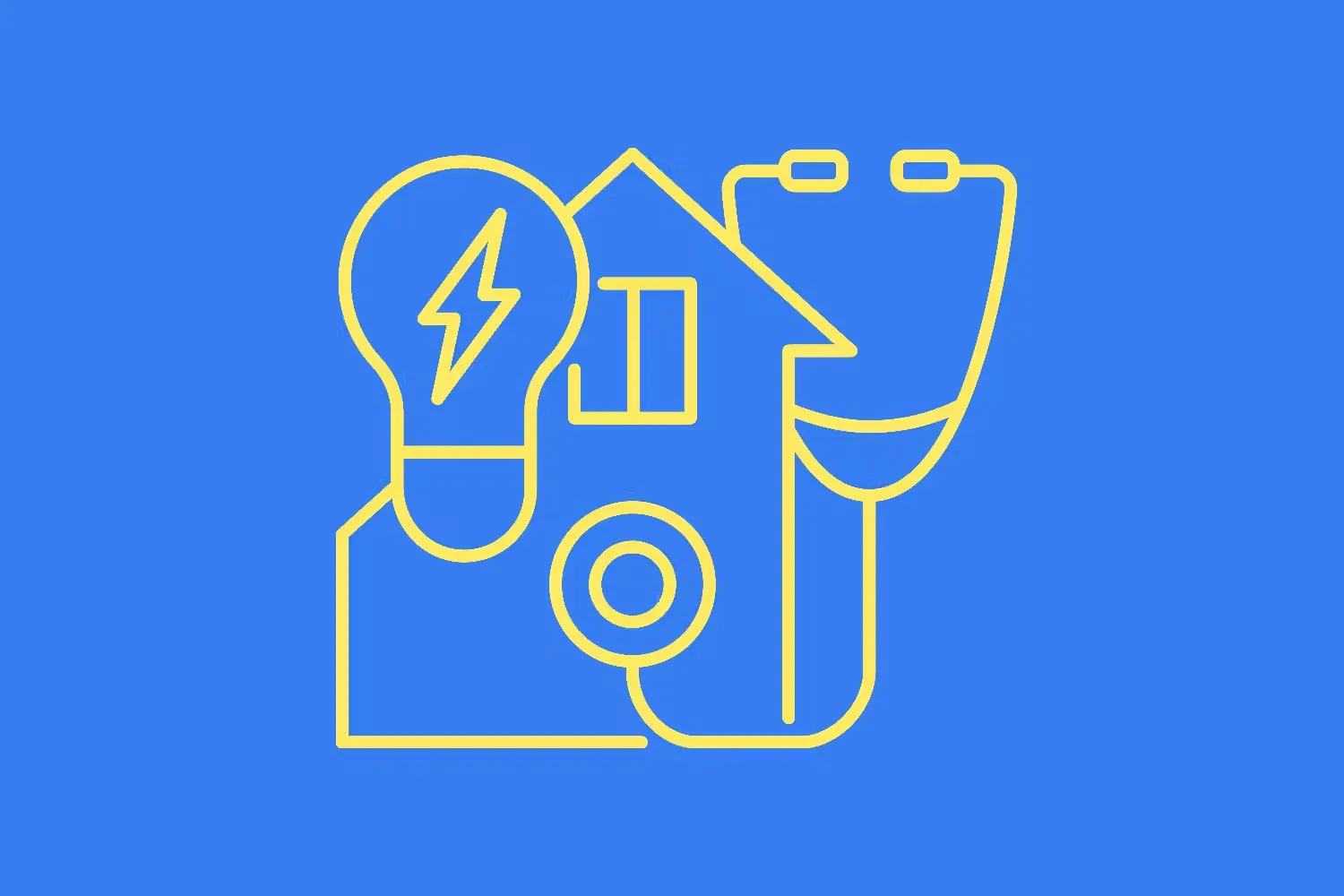
House Hunting? Here's a Basic Inspection Checklist

When you’re house hunting, chances are all the houses you’ll view will look amazing. The sellers will do their best to make the home welcoming, with fresh paint, spotless hardwood floors and fresh flowers to make you feel at home. But while the house might look wonderful at first glance, it’s more difficult to spot less obvious flaws. For instance, how will you know whether the plumbing is up to code, if the foundation is level, or if the water heater is on its last legs?
While there are some things you can test for yourself, a home inspection is a crucial step in the homebuying process to uncover potential problems before closing on a home. Here, we’ll review what steps you can assure yourself a home is in good condition before moving forward with an offer. Then, we’ll go over what you should expect from a professional home inspection.
From Mortgages to Home Equity Loans
Our local, award-winning lending team is ready to help you begin today.
Initial DIY Home Inspection Checklist
As you tour homes to buy, it’s okay to be a bit nosier than you would be if you were just visiting on a social call. After all, doing your own initial investigation into a home’s inner workings is just smart. A few things to look for before you even think about making an offer:
- Check out the bathroom. Turn on the faucets, run the shower and flush the toilet a few times to check for water quality and pressure. Listen for any unusual noises associated with the plumbing. Do you smell any hint of mold or dampness? Are floors sound, or could water damage be a possibility? Is ventilation sufficient?
- Examine the basement, crawlspace, or attic. These spaces can hold unpleasant surprises; as such you’d be wise to bring a strong flashlight so you can examine all nooks and crannies for water issues, rot, mold, critters, structural issues, unusable windows, ventilation problems, etc.
- Conduct research online. Start by Googling the address and the names of the owners to identify any red flags such as lawsuits or disputes with the city. You may also wish to pull the permits for any additions done on the house to make sure they were lawful.
- Prepare a list of questions. Write out everything you’d like to know about a property. If the realtor can’t answer those questions, find someone who can. You may turn up some red flags—or find out that you don’t need to worry.
Professional Home Inspection
So: the home has passed your initial inspection. You’ve made an offer and the current owner has accepted said offer. Often, a home inspection contingency will be part of the initial offer, allowing the buyer to negotiate a new price with the seller, or back out of the contract entirely without penalty if the home inspection uncovers major problems. As such, contracting services of a certified home inspector is a crucial part of the homebuying process.
What is a Home Inspection?
A home inspection is conducted by professional home inspectors who will examine the state of major systems such as the plumbing, electrical, heating and cooling (HVAC), exterior components like the roof and siding, and often will inspect the foundation—an important step in the shifting soil in and around Austin.
A home inspection is not a thorough accounting for every system within the house. Inspectors can’t disturb the home or cause damage—so they won’t be looking in walls, under appliances, or in some cases, in the attic or crawlspace.
A home inspection is also not a guarantee—without a date on an appliance, for instance, they can’t tell you how old it is. They can only report on the “basic condition” of the house and everything they can see—they can’t tell you how long the roof is going to last or when the electrical system was last updated.
How Do You Find a Home Inspector?
In Texas, home inspectors must show experience, complete training and pass an exam to obtain a license as a home inspector. The American Society of Home Inspectors (ASHI) provides information on what credentials a home inspector should have in the state you’re located.
Your realtor is a great resource when it comes to finding a home inspector and will likely be able to connect you with a trusted and experienced professional. It’s also a good idea to ask for recommendations from friends, family, coworkers, and even your future neighbors. With a short list in hand, ask each inspector for references and choose the one who seemed the most thorough and responsive.
Home Inspection Day
The home inspector will know what to do on the day of the inspection, but you can also prepare yourself so that the inspection is as useful to you as possible. If possible, try to be at the home while the inspection is taking place so you can ask follow up questions about any damage or defects that may be found. Inquire about the severity of the problems, as serious issues could impact your decision to move forward with the purchase of the home.
The Home Inspection Checklist
Knowing what to expect on the home inspection report can also help you better understand the severity of any problems. It can also help prepare you for the next steps once you have the report in your hands. Below is an extensive list of what you should look for in your home inspection report.
Grounds
- Good drainage away from the house with no standing water
- Driveway and walkways in good condition with no significant cracks
- Trees not overhanging or touching the roof
- Detached structures show no signs of rotted wood or termites
Roof
- No missing or damaged shingles
- Flashing around roof penetrations in good condition
- Vents are clean and unobstructed
- Gutters show no decay and are securely attached with downspouts
- Chimneys are straight with no evidence of damage
External structure
- Foundation appears straight and in good condition with no significant cracks
- Exterior walls are straight and don’t sag
- Window and door frames are square
- Siding has no cracks or decay
- Bricks have no damage or cracks to joints
- Aluminum or vinyl siding shows no dents or damage
- Paint is not flaking or blistered
- Exterior walls are not stained
Doors and windows
- Weather-stripping on doors is present
- Doors latch properly.
- No condensation inside double-paned windows
- Frames and trim are secure with no cracks
Crawl space
- There is adequate ventilation to exterior
- No damage from moisture or insects
- Water supply and pipes are insulated
- Space between crawl space and heated areas is insulated
Attic
- No evidence of staining from the roof
- No damage or decay to the structure
- Adequate ventilation
- Plumbing, exhaust and appliance vents extend through the roof
- Proper and adequately installed insulation
Electrical
- Service panel has adequate capacity
- No knob-and-tube wiring
- No aluminum cable for branch circuits
- Cables are secured
- Wiring is in good condition
- No exposed electrical splices
Plumbing
- Pipes show no damage or evidence of leaks
- Drain pipes slope toward the main waste outlet to the sewer
- Water heater is the right size for the home
- Water heater shows no signs of rust
- Manufacturer’s date of water heater is within the length of expected use
- Water pressure is within accepted range
- Hot water temperature does not exceed 125-degrees Fahrenheit
HVAC
- No gas odor
- AC and heating operate well with good airflow throughout the home
- Visible ductwork is in good condition
- No rust around the cooling unit
Bathrooms
- Exhaust fan vents to exterior
- Adequate water flow and pressure for hot and cold water
- Visible plumbing is in good condition and the cabinet floor has no water damage
- Toilets flush and refill properly
- Toilet does not rock or have stains at base
- Ground fault circuit interrupter (GFCI) plugs for all electrical outlets are within 6 feet of sinks
- No evidence of leaking around the shower or tub base
Kitchen
- Exhaust fan vents to the outside
- Ground fault circuit interrupter (GFCI) plugs for all electrical outlets are located within 6 feet of sinks
- Plumbing under the sink is in good condition
- Cabinets show no stains or decay from past leaks
- Garbage disposal works and has no rust or deterioration
- Cabinets are in good condition
Interior
- Floors, walls, and ceilings show no stains
- Flooring is in good condition
- No significant cracks in walls or ceilings
- Paint, wall covering, paneling in good condition
- Wood trim installed well and in good condition
- Lights and switches operate properly
- Adequate number of electrical outlets in each room
- Electrical outlets function with spot checks
- Fireplace is not cracked or damaged staining
- Chimney flue has been cleaned and is lined and the damper works properly
Be an Informed Buyer
Organizing a home inspection before finalizing the purchase of a new home helps you limit your risk exposure to major repairs and allows you to obtain the information you need to make an informed decision. Keep this checklist close at hand when you get your home inspected, and step confidently in the direction of home ownership.
Ready to get prequalified?
Apply today and start your journey toward your new home.

